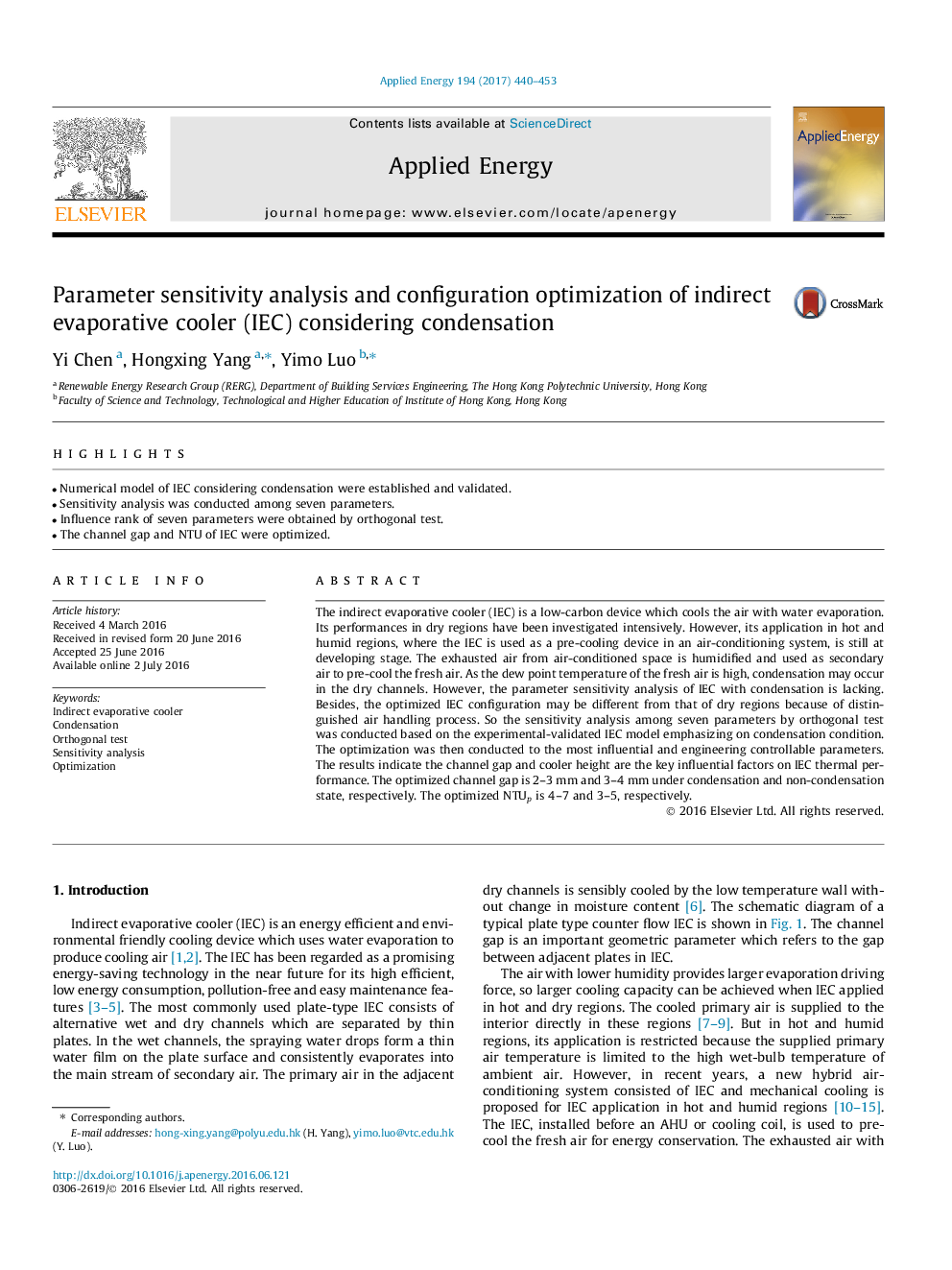| Article ID | Journal | Published Year | Pages | File Type |
|---|---|---|---|---|
| 4916369 | Applied Energy | 2017 | 14 Pages |
Abstract
The indirect evaporative cooler (IEC) is a low-carbon device which cools the air with water evaporation. Its performances in dry regions have been investigated intensively. However, its application in hot and humid regions, where the IEC is used as a pre-cooling device in an air-conditioning system, is still at developing stage. The exhausted air from air-conditioned space is humidified and used as secondary air to pre-cool the fresh air. As the dew point temperature of the fresh air is high, condensation may occur in the dry channels. However, the parameter sensitivity analysis of IEC with condensation is lacking. Besides, the optimized IEC configuration may be different from that of dry regions because of distinguished air handling process. So the sensitivity analysis among seven parameters by orthogonal test was conducted based on the experimental-validated IEC model emphasizing on condensation condition. The optimization was then conducted to the most influential and engineering controllable parameters. The results indicate the channel gap and cooler height are the key influential factors on IEC thermal performance. The optimized channel gap is 2-3Â mm and 3-4Â mm under condensation and non-condensation state, respectively. The optimized NTUp is 4-7 and 3-5, respectively.
Related Topics
Physical Sciences and Engineering
Energy
Energy Engineering and Power Technology
Authors
Yi Chen, Hongxing Yang, Yimo Luo,
